Choosing a canoe, what to look at?
Choosing a canoe can be mystifying. Yet it’s important to understand the basics because the design of a canoe has a direct effect on how the boat behaves on the water. For example, a canoe built for speed will paddle easily and efficiently. A boat built for maneuverability on the other hand will turn quickly and easily.
But what determines these characteristics? Length, width and depth are obvious, but what does rocker mean and what is the effect of a rounded bottom? When choosing a canoe, there are a lot of things to consider.
General characteristics
Length: Has a decisive influence on the performance of the canoe. If all other factors remain unchanged, a longer canoe will be faster, will track straighter and will have a larger load capacity than a shorter one.
The compromise is reduced maneuverability. A long canoe will take tight turns less smoothly and will react less quickly to sweep strokes. That does not mean a long canoe is necessarily difficult to steer. It’s just not the best choice for whitewater for example.
In most situations, the extra effort when turning will be equaled out by the gains in tracking and speed.
Width: Measured at the widest point of the canoe. More significant is the width at the waterline at the widest point. That tells the most about the performance of the canoe because it gives you an indication of the water displacement. A narrow canoe is faster than a wider one but loses some stability.
Depth: Measured at the bow, center and stern. An increasing depth provides more loading capacity and freeboard. It makes it easier to paddle the canoe through the waves.
Hull profile
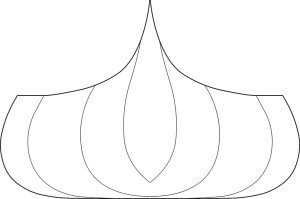
Flat bottom: Canoes with a flat bottom are very stable in calm water. That initial stability, however, comes at the expense of the secondary stability. Flat bottomed canoes are vulnerable to wind and waves, and also edging is harder. This situation however is unlikely to occur since flat bottoms are used for calm water for fishing, recreational canoeing and family outings. Our Malecite is an excellent example.
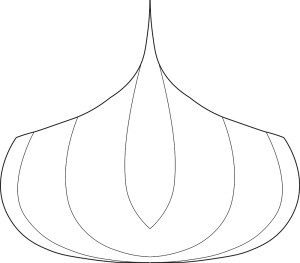
Round bottom: The absolute opposite of the flat bottom. Canoes with a round bottom are built to paddle fast and efficient but are difficult to balance by less experienced paddlers. In other words, the initial stability is low. The secondary stability, however, is very high. Once you have forward momentum these canoes can be edged very far and they are very stable in waves.Our Passamaquoddy is an excellent example.
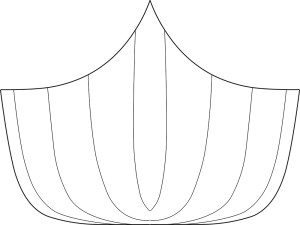
Shallow arch: The perfect marriage between the stability of a flat and the efficiency of a round bottom. A part of the bottom in the middle of the boat is flat while the stems are arched. Our Atkamekw is an excellent example.
Canoe profile
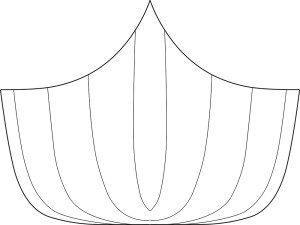
Flared: Canoes with flared sides provide greater stability and prevent water from entering while paddling. Some canoeists consider flared sides less comfortable because you have to reach further while paddling.
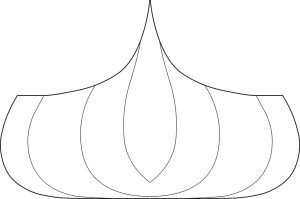
Tumblehome: If speed and efficiency are the main criteria for your canoe then tumblehome sides are the best choice. They are more comfortable to paddle and edge better. The downside is that some water might enter the boat. Our Passamaquoddy is an excellent example.
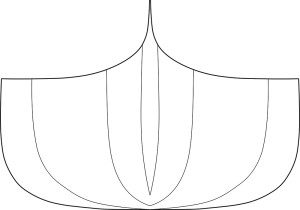
Straight: A straight profile offers no particular advantage or disadvantage and is often combined with one of the other profiles. For example, a canoe can be tumblehome at the ends and straight in the middle. Our Atkamekw is an excellent example.
Other characteristics
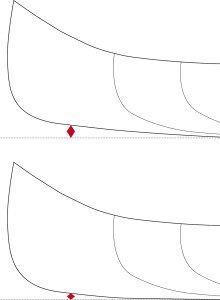
Rocker: Heavy, moderate to light. If you’re choosing a canoe with a lot of rocker itwill turn much easier because a smaller part of the hull is effectively in the water. That means a lot of profit in terms of maneuverability, but a commensurate loss with respect to stability. The opposite is also true. A canoe with less rocker wil track far better but will be more difficult to turn.
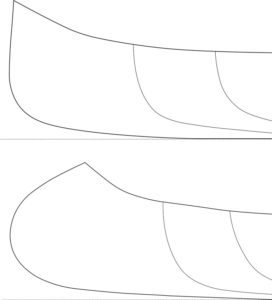
Stems: Determine the shape of bow and stern. They may be straight or rounded. A straight bow creates slightly more directional stability while a rounded bow will give more maneuverability. The height of the bow and stern is also important, in particular on rivers or in waves. A high bow prevents water from entering the canoe. The downside is that a high bow is more sensitive to crosswinds.

